PISMA CHEMICALS BV
Netherlands
Manufacturer/ Producer

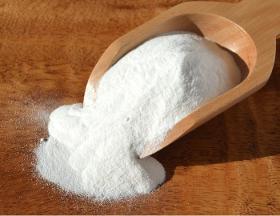
PISMA CHEMICALS BV
Netherlands
Sodium bicarbonate, also known as baking soda, is a chemical compound with the formula NaHCO3. When it is labeled as “food grade,” it means that the sodium bicarbonate has met certain purity and safety standards for use in food preparation and consumption. Food-grade sodium bicarbonate is specifically produced and processed to ensure that it does not contain any harmful impurities or contaminants that could be detrimental to human health. Sodium bicarbonate has a wide range of culinary and food-related uses, including: Baking: It is commonly used as a leavening agent in baking recipes, helping dough and batter rise by producing carbon dioxide gas when mixed with acidic ingredients like vinegar, buttermilk, or cream of tartar.
Request for a quote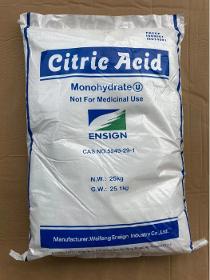
PISMA CHEMICALS BV
Netherlands
Citric acid monohydrate is a form of citric acid that contains one molecule of water per molecule of citric acid. Citric acid itself is a weak organic acid found naturally in citrus fruits like lemons, limes, oranges, and grapefruits. It is commonly used as a flavoring agent, acidulant, preservative, and pH regulator in various food, beverage, and industrial products. Here are some key points about citric acid monohydrate: Water Content: Citric acid monohydrate contains one molecule of water (H2O) per molecule of citric acid (C6H8O7). The presence of water in this form does not significantly affect its chemical properties, but it does slightly alter its physical characteristics. Food and Beverage Industry: Citric acid monohydrate has many of the same applications as anhydrous citric acid in the food and beverage industry: – Flavor Enhancer: It adds a tangy and acidic flavor to food and beverages, enhancing their taste.
Request for a quote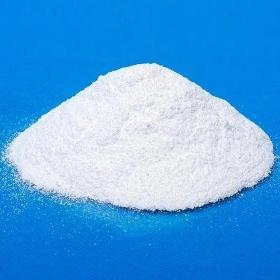
PISMA CHEMICALS BV
Netherlands
Soda ash light, also known as light soda ash or sodium carbonate, is a chemical compound with the chemical formula Na2CO3. It is an essential industrial chemical used in various applications. Here are some key points about soda ash light: Chemical Composition: Soda ash light consists of two sodium (Na) atoms, one carbon (C) atom, and three oxygen (O) atoms, arranged in a specific molecular structure. Appearance: It typically appears as a white, odorless powder or granules. The “light” in its name refers to its relatively low density compared to the dense or heavy variant of soda ash, which is known as soda ash dense. Production: Soda ash light is primarily produced through a chemical process known as the Solvay process. This process involves the reaction of sodium chloride (table salt), ammonia, and limestone (calcium carbonate) to produce sodium carbonate.
Request for a quote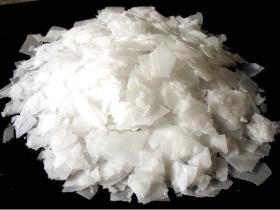
PISMA CHEMICALS BV
Netherlands
Caustic soda flakes, also known as sodium hydroxide flakes, are a strong alkaline chemical compound with the chemical formula NaOH. They are solid white flakes that are highly soluble in water and have a wide range of industrial applications due to their strong caustic and alkaline properties. Here are some key points about caustic soda flakes: Chemical Formula: The chemical formula for caustic soda flakes is NaOH, which consists of one sodium (Na+) ion and one hydroxide (OH-) ion. This combination gives the substance its strong alkaline nature. Industrial Applications: Caustic soda flakes are widely used in various industries, including: – Chemical Industry: They are used in the production of chemicals, such as detergents, soaps, and various organic compounds. – Pulp and Paper Industry: Caustic soda is used to break down lignin in wood during the papermaking process. – Textile Industry: It’s used in processes like mercerization to improve the properties of cotton fibers.
Request for a quote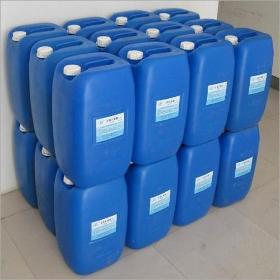
PISMA CHEMICALS BV
Netherlands
Hydrogen peroxide (H2O2) is a chemical compound composed of two hydrogen atoms and two oxygen atoms. It is a pale blue liquid in its pure form and is commonly used as a disinfectant, bleaching agent, and oxidizer. Here are some key characteristics and uses of hydrogen peroxide: Chemical Formula: H2O2 Appearance: Pure hydrogen peroxide is a colorless liquid, but it is often sold in dilute solutions, which can appear clear or slightly bluish. Chemical Properties: Hydrogen peroxide is a powerful oxidizing agent, meaning it can readily donate oxygen atoms to other substances. It decomposes into water and oxygen when exposed to light, heat, or certain catalysts. Concentration: Hydrogen peroxide is commonly available in various concentrations, with the most common household concentration being 3%. Higher concentrations are available for industrial and commercial purposes. Disinfectant: It is used as an antiseptic to clean and disinfect wounds and as a mouthwash.
Request for a quote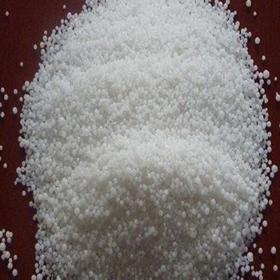
PISMA CHEMICALS BV
Netherlands
Caustic soda pearls, also known as sodium hydroxide pearls, are a form of solid caustic soda (sodium hydroxide, NaOH) that resembles small, round beads or pearls. Like other forms of caustic soda, caustic soda pearls are highly alkaline and have a wide range of industrial applications. Here are some key points about caustic soda pearls: Physical Form: Caustic soda pearls are small, white, spherical beads that are easier to handle and transport compared to other forms of caustic soda, such as flakes or granules. Industrial Applications: Similar to other forms of caustic soda, caustic soda pearls are used in various industries for different purposes, including: – Chemical Industry: They are used in the production of chemicals, including detergents, soaps, and various organic compounds. – Pulp and Paper Industry: Caustic soda pearls are used in the papermaking process to break down lignin in wood fibers.
Request for a quote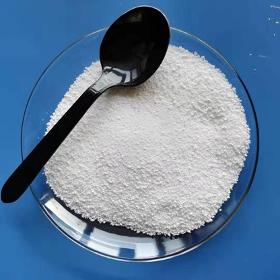
PISMA CHEMICALS BV
Netherlands
Sodium tripolyphosphate (STPP) is a chemical compound with the formula Na5P3O10. It is a highly soluble white crystalline powder and is often used in a variety of industrial and household applications. Here are some common uses of sodium tripolyphosphate: Detergents and Cleaners: STPP is a key ingredient in many laundry detergents and dishwasher detergents. It helps to soften water by sequestering calcium and magnesium ions, which can interfere with the cleaning process. This improves the effectiveness of detergents and helps prevent the buildup of scale in washing machines and dishwashers. Food Additive: In the food industry, sodium tripolyphosphate is used as a food additive with the E number E451. It is primarily used as a preservative and emulsifier in various processed foods, including seafood, meats, and canned soups. It helps to retain moisture in meats and seafood, enhancing their texture and appearance.
Request for a quote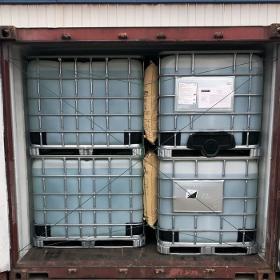
PISMA CHEMICALS BV
Netherlands
Hydrochloric acid, often abbreviated as HCl, is a strong and highly corrosive acid. It is a colorless, pungent-smelling liquid that is composed of hydrogen and chlorine atoms. Hydrochloric acid is a common and important chemical in various industrial and laboratory processes. Here are some key characteristics and uses of hydrochloric acid: Chemical Formula: HCl Chemical Structure: It consists of one hydrogen (H) atom and one chlorine (Cl) atom covalently bonded together. Concentration: In its concentrated form, hydrochloric acid is typically a solution with a high concentration of HCl molecules dissolved in water. Common concentrations include 37% and concentrated hydrochloric acid, which is nearly 12 M (molar) in strength. Acidity: Hydrochloric acid is highly acidic with a low pH value. In concentrated form, it can have a pH of approximately 0-1. Corrosiveness: It is known for its corrosive properties and can dissolve various metals and react with a wide range of materials.
Request for a quoteManufacturer/ Producer
Rivium Boulevard 301
2909LK Capelle Aan Den Ijssel - Netherlands
europages also recommends
A selection of companies related to the activity:
A selection of products that might interest you
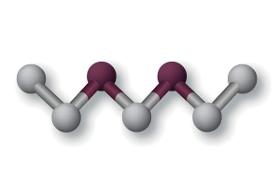
LAMBIOTTE & CIE
Belgium
Molecular formulaC5H12O2 Molecular weight104.2 CAS number462-95-3 EC number207-330-6 IUPAC name(Ethoxymethoxy) ethane EC nameDiethoxymethane
Request for a quote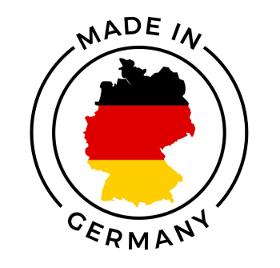
AAAGILER GMBH
Germany
We export industrial supplies and construction supplies internationally.. As your commercial agent for industrial supplies in Germany/DACH, we have in-depth knowledge of the local market dynamics. We stay updated on the latest trends, customer demands, and industry developments, allowing us to provide strategic guidance for your market entry and expansion. Our extensive network of reliable suppliers and key industry players enables us to connect you with the right partners, ensuring competitive pricing and timely delivery. We are focused on the following product categories: Customized Industrial Supplies: Tailored solutions to meet your unique industrial requirements, ensuring optimal functionality and efficiency in your operations. Specialized industrial / construction equipment rental: Offering a diverse range of specialized industrial and construction equipment for rent (with low turnover rate, but high rent) in Germany / DACH region.
Request for a quote
POLYNEO GMBH
Germany
The segment Performance Additives was established with the intention of offering our customers from the plastics industry an extensive and exclusive product portfolio. This product portfolio comprises a wide range of high-performance additives for various plastics. Fine-tuned to individual customer needs we deliver different additives, catalysts und colorants to PET producers.
Request for a quote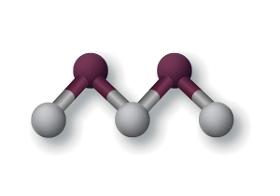
LAMBIOTTE & CIE
Belgium
Molecular formulaC3H8O2 Molecular weight76,08 CAS number109-87-5 EC number203-714-2 IUPAC nameDimethoxymethane EC nameDimethoxymethane
Request for a quoteRequest for quotes
Create one request and get multiple quotes form verified suppliers.
- Only relevant suppliers
- Data privacy compliant
- 100% free



